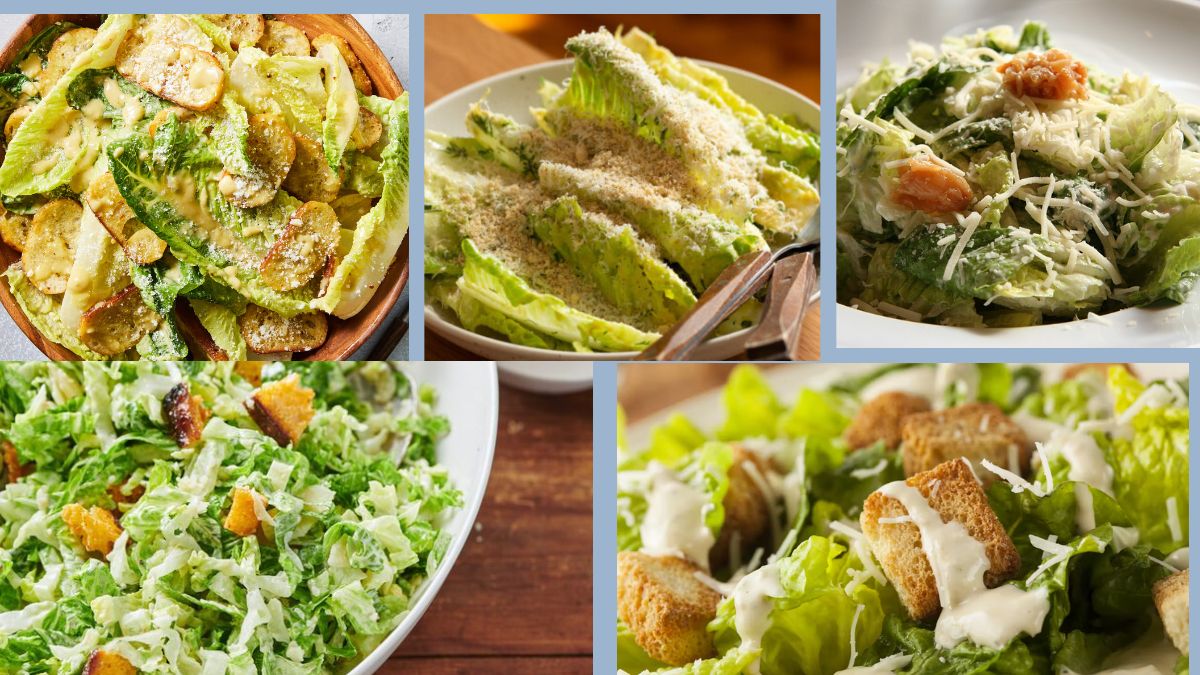When you think of iconic salads that have stood the test of time, Caesar salad almost certainly comes to mind. With its creamy dressing, crunchy croutons, and crisp romaine lettuce, the Caesar salad has become a staple in restaurants, cafes, and homes around the globe.
But one curious question arises:
Which country eats the most Caesar salad in the world?
The answer is—the United States of America.
While its origins trace back to Mexico, Caesar salad has become most popular in the U.S., where it is served in virtually every restaurant, from fast food joints to Michelin-starred establishments. Over time, it has spread across the world and evolved into countless vegetarian and vegan variations that skip the traditional anchovies and chicken, focusing on flavor, crunch, and creaminess—without non-veg ingredients.
In this article, we’ll explore:
- The history and evolution of Caesar salad
- The global popularity and top-consuming countries
- How the classic has been adapted to vegetarian diets
- Modern vegetarian Caesar trends and recipes
Let’s dive into the bowl!
The Origin Story of Caesar Salad

Surprisingly, Caesar salad wasn’t invented in Italy or the U.S.—but in Mexico.
Who Invented It?
Caesar salad was created in 1924 by Caesar Cardini, an Italian-American restaurateur who operated a restaurant in Tijuana, Mexico. During a busy 4th of July weekend, with limited ingredients, he whipped up a simple yet flavorful salad using:
- Romaine lettuce
- Garlic
- Croutons
- Parmesan cheese
- Olive oil
- Lemon juice
- Egg
- Worcestershire sauce (which later led to the anchovy flavor)
It was a hit. Soon, Caesar salad became a must-try dish for Hollywood stars visiting Tijuana and eventually spread across North America.
Why the United States Eats the Most Caesar Salad
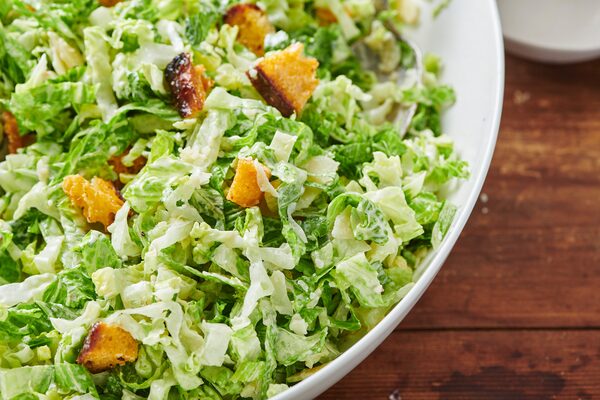
Caesar salad is now a menu staple across the U.S., where it has been embraced like few other salads. Its rich flavor and satisfying texture make it a go-to choice for health-conscious diners, vegetarians (with substitutions), and salad lovers alike.
Factors Behind the U.S. Dominance:
- Restaurant standard: Nearly every American eatery offers Caesar salad or a variation.
- Versatility: Served as a starter, side, or full meal (with protein add-ons).
- Customizable: Easily adapted for vegetarians, vegans, or gluten-free diets.
- Popularity in meal kits and pre-packaged salads: Caesar salads dominate grocery store shelves.
- Cultural presence: Common in lunchboxes, dinner tables, office lunches, and health-focused menus.
According to food trend reports, Caesar salad is among the top five most ordered salads in American restaurants—and also one of the most frequently prepared salads at home.
Other Countries That Love Caesar Salad
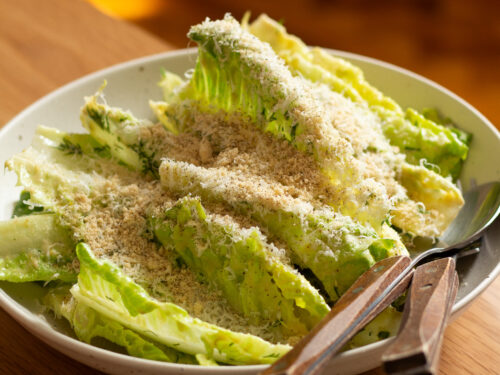
Although the U.S. leads in consumption, other countries have also embraced the Caesar salad and added their own twist—many of which are vegetarian or easily adaptable.
1. Canada
- Caesar salad is popular in both traditional and gourmet forms.
- Often served with veggie toppings like roasted red peppers or spiced tofu.
- Canada is also known for the Caesar cocktail—but that’s a different story!
2. United Kingdom
- Common in gastropubs and casual dining.
- Vegetarian versions often feature grilled halloumi or egg in place of meat or anchovies.
- Supermarkets stock ready-to-eat Caesar kits, many of them meat-free.
3. Australia
- Widely enjoyed as a healthy lunch or dinner option.
- Plant-based eating is on the rise, and many restaurants now offer vegan Caesar salads made with cashew dressings and dairy-free cheese.
4. India
- As a mostly vegetarian nation, Caesar salads here are adapted to suit local tastes.
- Common substitutes: paneer, roasted chickpeas, or even spiced potatoes instead of chicken or bacon.
- Anchovy-free dressings are the norm.
5. Mexico
- Though it’s the salad’s birthplace, it’s less popular locally than it is globally.
- Still, fine-dining spots and cafes in urban centers serve modern, vegetarian-friendly Caesar salads in honor of its origins.
Vegetarianizing the Classic Caesar Salad
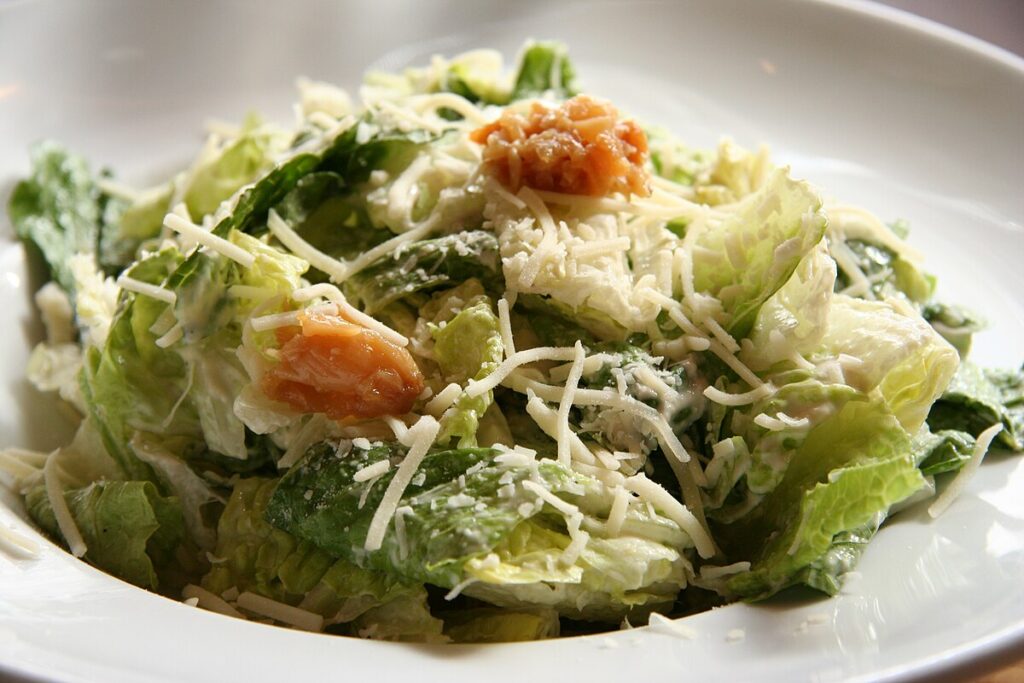
The traditional Caesar dressing includes egg, anchovies, and Worcestershire sauce, which are not vegetarian. Many modern Caesar salads also include grilled chicken, bacon, or seafood, making them unsuitable for plant-based diets.
However, the good news is:
Vegetarian (and even vegan) Caesar salads are not only possible—they’re delicious.
Key Vegetarian Substitutions:
| Traditional Ingredient | Vegetarian Alternative |
|---|---|
| Anchovies or Worcestershire | Soy sauce, tamari, capers, miso, or seaweed for umami |
| Egg yolk (in dressing) | Vegan mayo, silken tofu, cashew cream, or aquafaba |
| Parmesan cheese | Vegetarian Parmesan (rennet-free) or nutritional yeast |
| Chicken or bacon | Grilled tofu, chickpeas, roasted mushrooms, or tempeh |
| Croutons (often with butter) | Olive oil-toasted bread cubes or gluten-free options |
These tweaks help maintain the signature Caesar flavor—creamy, tangy, garlicky, and umami-rich—without compromising vegetarian values.
Popular Vegetarian Caesar Variations
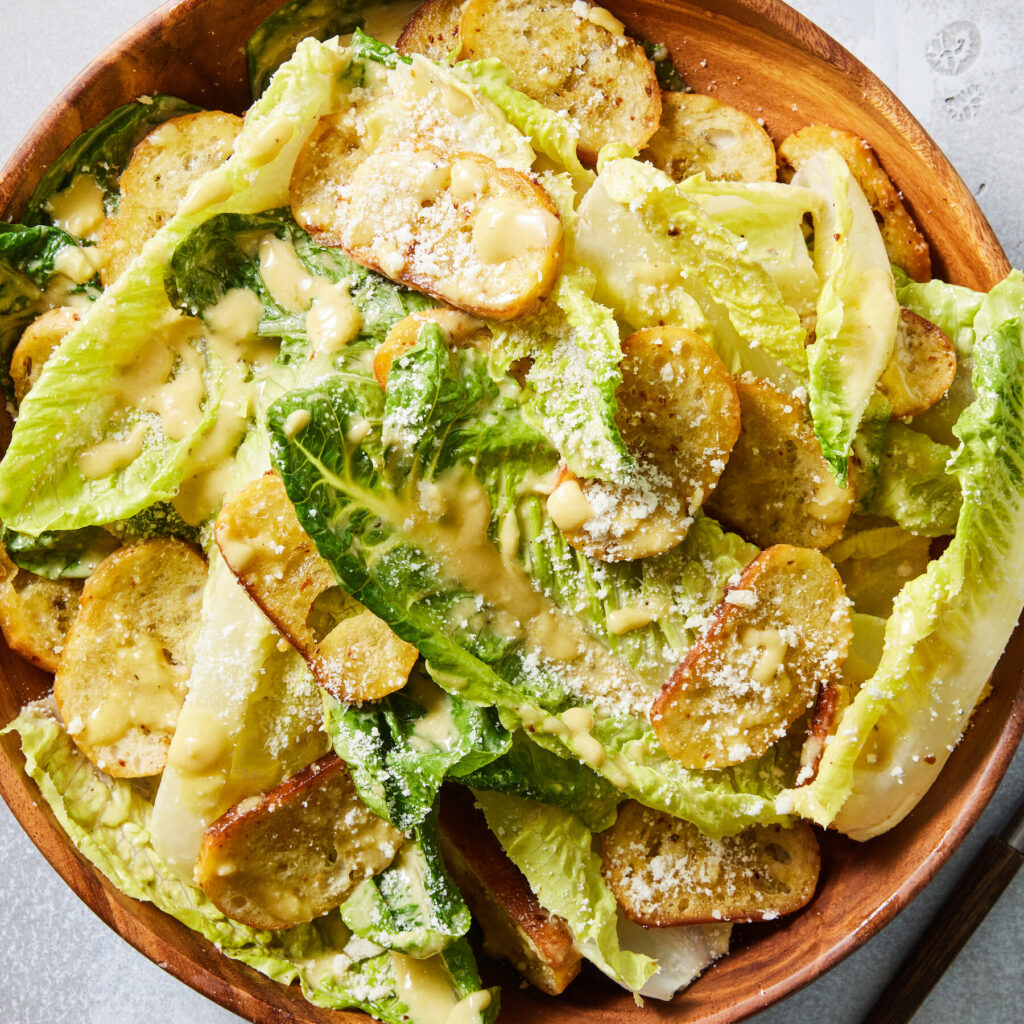
Caesar salad is no longer just lettuce and croutons. Across the globe, chefs and home cooks are getting creative.
Trending Vegetarian Caesar Additions:
- Grilled or roasted vegetables – zucchini, bell peppers, or sweet potatoes
- Protein-rich toppings – tempeh, chickpeas, or quinoa
- Different greens – kale, spinach, or arugula as a twist on romaine
- Seed or nut-based toppings – sunflower seeds, almonds, or walnuts for crunch
- Avocado – for extra creaminess and healthy fats
Many upscale restaurants now offer “Gourmet Vegetarian Caesar Salads” as main dishes, complete with artisan croutons, shaved hard-boiled eggs, and microgreens.
Caesar Salad and Health: A Nutritious Choice?
While Caesar salad has a reputation for being rich (thanks to its creamy dressing), a well-made vegetarian version can be incredibly nutritious.
Health Benefits of a Vegetarian Caesar:
- High in fiber from leafy greens and added vegetables
- Rich in healthy fats if made with olive oil or avocado
- Excellent source of calcium and protein when using tofu or cheese
- Lower in sodium and cholesterol without anchovies or processed meats
By controlling ingredients—especially the dressing—you can make Caesar salad a healthy, satisfying part of your meal plan.
Caesar Salad in Pre-Packaged and Fast Food Markets
In the U.S., UK, and Australia, vegetarian Caesar salads have made their way into:
- Supermarket shelves (ready-to-eat kits)
- Meal delivery boxes like HelloFresh or Blue Apron
- Fast food and grab-and-go chains
Brands are increasingly offering anchovy-free Caesar dressings and plant-based versions as vegetarianism becomes mainstream.
Even chains like Sweetgreen, Panera, Pret a Manger, and Freshii offer vegetarian and vegan Caesar salads with all the flavor, minus the meat.
Conclusion: The U.S. Leads, but Caesar Is Loved Globally—Even Without Meat
So, which country eats the most Caesar salad in the world?
The United States—by a long shot.
With millions of Caesar salads consumed daily in restaurants, schools, homes, and offices, the U.S. remains the global hub of Caesar salad consumption. But that popularity has inspired creative, meat-free versions across the world—proving that you don’t need anchovies or chicken to enjoy this timeless dish.
Today, vegetarian Caesar salad is:
- Versatile
- Satisfying
- Nutritious
- And more accessible than ever
Whether you’re a lifelong vegetarian or just looking to eat more plants, a meat-free Caesar salad is the perfect combination of flavor and feel-good eating.
